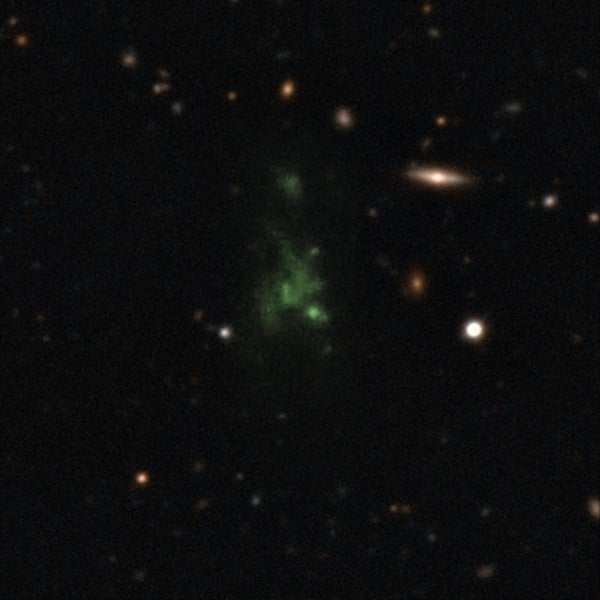Researchers studying some of the youngest galaxies currently visible with today’s technology have made an amazing discovery. They’ve found that these galaxies grab and hold onto their photons, letting very few escape — something that could have happened in the early Milky Way as well.
Teams led by David Sobral at the University of Lancaster and Jorryt Matthee at the University of Leiden have found large but faint halos of photons around young galaxies in a study to further our understanding of galaxy formation. What’s more, the photons in these halos have had a difficult past. After their creation, they faced dense conditions thick with clouds of gas and dust that have hindered their paths of travel over distances of hundreds of thousands of light-years. Instead of traveling in a straight line, these photons continually knock into particles encroaching in their path as they move from inside the galaxy outward. As a result, only a small fraction of the photons emitted inside these galaxies have successfully made the journey far enough from their point of origin to render them visible to astronomers from the outside.
The group discovered the photons’ struggles by conducting a survey of nearly 1,000 distant galaxies using the Isaac Newton Telescope (INT) in the Canary Islands. Using the telescope’s Wide Field Camera and several custom-made filters, they searched for Lyman-alpha emission in their target galaxies and measured both the amount of emission produced and the emission’s exit points from each galaxy.
Lyman-alpha emission is associated with hydrogen gas; Lyman-alpha photons are produced when electrons fall from the second energy level down to the first, or lowest, energy level within a hydrogen atom, emitting a photon with a specific amount of energy in the process. Because electrons prefer to sit at the lowest energy level, this type of transition is extremely common.
Next, they compared their measurements with predictions of where and how Lyman-alpha photons should be produced in these galaxies. In a paper published in the January issue of Monthly Notices of the Royal Astronomical Society, the astronomers revealed that their results showed that only 1-2% of Lyman-alpha photons are able to escape the dense centers, or bulges, of these early spiral galaxies to form the haloes they detected. Even when taking into account photons escaping from the outer edges of the galaxies, the team found that fewer than 10% of the Lyman-alpha photons generated within these galaxies were able to escape.
In a recent press release, astronomer Jorryt Matthee explained, “Newly born stars in very distant galaxies are hot enough to break apart hydrogen in surrounding clouds of gas, which then shines brightly in Lyman-alpha light, in theory the strongest such features observable in a distant galaxy. Yet in practice, Lyman-alpha photons struggle to escape galaxies as gas and dust block and diverge their travel paths, making it a complex process to understand.”
In other words, this small escape fraction means that most Lyman-alpha emission is “blocked” from escaping the galaxy and forming a halo directly by interactions with gas and dust along each photon’s path, which cause an endless series of absorptions and re-emissions that dramatically slow the photons’ progress to the edge of the galaxy.
“We now need to understand exactly how and why that happens,” says David Sobral. The next step? Using the soon-to-be-launched James Webb Space Telescope to study these halos in galaxies even more distant than the ones accessible to the INT. Looking at these halos at even earlier epochs will tell astronomers how the escape fraction of Lyman-alpha photons changes over time, shedding more light on both the young stars that produce this emission and the types of gas and dust found within galaxies early in their lifetimes.










